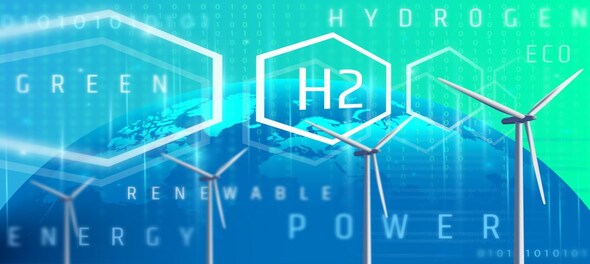
The Conference of Parties (COP26) on the climate crisis, which concluded on Friday, saw governments, automakers, and other stakeholders pledge to transition to 100 percent zero-emission vehicles by 2040.
On the Transport Day of the summit, India underlined the need to transition the country's large two and three-wheelers fleet, which collectively make up for over 80 percent of the automobiles in the country, to zero-emission vehicles.
Currently, the market offers four zero-emission technologies to power vehicles — battery electric vehicles (BEVs), biofuel internal combustion engines, hydrogen fuel-cell electric vehicles (FCEVs), and hydrogen internal combustion engines (H2-ICEs).
While most carmakers have already rolled out their BEV models, not much headway has been made with biofuel internal combustion engines as their emissions depend on the sourcing of biomass and carbon.
Meanwhile, hydrogen-powered car engines — both FCEVs and H2-ICEs — have evolved significantly over the last few decades.
How does a hydrogen internal combustion engine work?
H2-ICEs are similar to conventional combustion engines and only a few tweaks are made to convert them to run on hydrogen. Certain components of the engine like the fuel delivery system and spark plugs are changed to use hydrogen instead of petrol or diesel.
As for emissions, such vehicles mostly emit just water vapour but they are not zero-emission engines as the combustion process in H2-ICEs leads to emission of toxic nitrogen oxides (NOx). A minute amount of carbon dioxide (CO2) is also released due to burning of engine oil in such engines. In comparison, FCEVs, which use hydrogen to power the fuel cell, are much cleaner.
Research and development
Last month, Toyota tested hydrogen combustion engines in race cars and said the ultimate goal is to use the H2-ICE technology in commercial cars. The technology was tested on a 1.6-litre engine Toyota Yaris for racing.
The H2-ICE-powered car completed the race with an average speed of 68 kmph, but it had to make 35 fuel stops. On average, the car stopped for fuel roughly after every 42 minutes. Out of 24 hours the car was on the race track, close to four hours were spent refilling. This is despite Toyota fitting two hydrogen tanks in the back seat area of the car, which cannot be the case for commercial cars.
Shortcomings
The experiment brought to the fore the reduced efficiency of hydrogen fuel as compared to petrol. Hydrogen requires a lot more storage than conventional fuels but stacking more hydrogen tanks in a car would completely eat into the interior space, making the vehicle largely impractical. Thus, an H2-ICE vehicle with an acceptable travel range is still far from reality.
Besides, the current process of creating hydrogen fuel is not eco-friendly as it involves the use of fossil fuels, which contributes greatly to CO2 emissions. While hydrogen can also be harnessed using renewable resources, the cost of the process is exorbitant. Thus, H2-ICE vehicles become a counter-productive solution to reducing toxic emissions.
Another impediment to H2-ICE vehicles becoming mainstream is the lack of hydrogen fuel infrastructure. At present, only a few nations have hydrogen fuel stations. The cost of setting up a hydrogen station is very high in most markets as such vehicles are not popular commercially and investing in stations doesn’t make much business sense.
Additionally, refuelling an H2-ICE vehicle takes longer than it does in conventional ICE cars. Thus, if more and more people switch to H2-ICE vehicles, hydrogen fuel stations are most likely to witness serpentine queues. According to an estimate, people may have to wait for as much as 20 minutes to get their H2-ICE vehicle refuelled, and not every person may have that much time to spare. Also, there is a potential risk of high-intensity explosions at hydrogen refuelling stations.
Lastly, current H2-ICE technology is no match for the BEVs available in the market. Constant evolutions in lithium ion battery technology have brought EVs at par with conventional fuel cars. The success of Tesla is a shining example in this case.
Can H2-ICE vehicles become a feasible concept?
Experts advocate hydrogen combustion engines for commercial vehicles as they need to operate for a set number of hours and have fixed journey points. If a few hydrogen refuelling stations are set up on dedicated freight routes, commercial vehicles can make the transition to H2-ICEs. In fact, heavy machinery specialist JCB is already working on adopting hydrogen combustion engines. Similarly, race cars -- which use a fixed route and are operated for a limited time -- can also make the switch to H2-ICEs.
In India, Union Minister for Road Transport and Highways Nitin Gadkari has encouraged the use of hydrogen as an automotive fuel on multiple occasions. Recently, government-run GAIL India announced that it will set up a 10 MW green hydrogen facility -- the country’s largest such plant -- over the next 12-14 months. In the private sector, Mukesh Ambani-led Reliance Industries is also working on a technology to bring down the cost of green hydrogen.
However, till all these efforts materialise, H2-ICE vehicles will remain a little far from becoming a mainstream viable option for consumers.
(Edited by : Kanishka Sarkar)
Check out our in-depth Market Coverage, Business News & get real-time Stock Market Updates on CNBC-TV18. Also, Watch our channels CNBC-TV18, CNBC Awaaz and CNBC Bajar Live on-the-go!


PM Modi, Rahul Gandhi election rallies in Delhi today: Here are the routes to avoid
May 18, 2024 11:28 AM
Celebrity Kangana vs 'royal' Vikramaditya on Himachal's Mandi seat: Clash of richest titans
May 18, 2024 11:11 AM
2024 Lok Sabha Elections | Will Amethi and Rae Bareli see the rise of Priyanka Gandhi as a dominant political figure
May 18, 2024 8:59 AM
Lok Sabha Election 2024: I.N.D.I.A. bloc to hold rally at Mumbai's BKC today
May 17, 2024 5:18 PM

